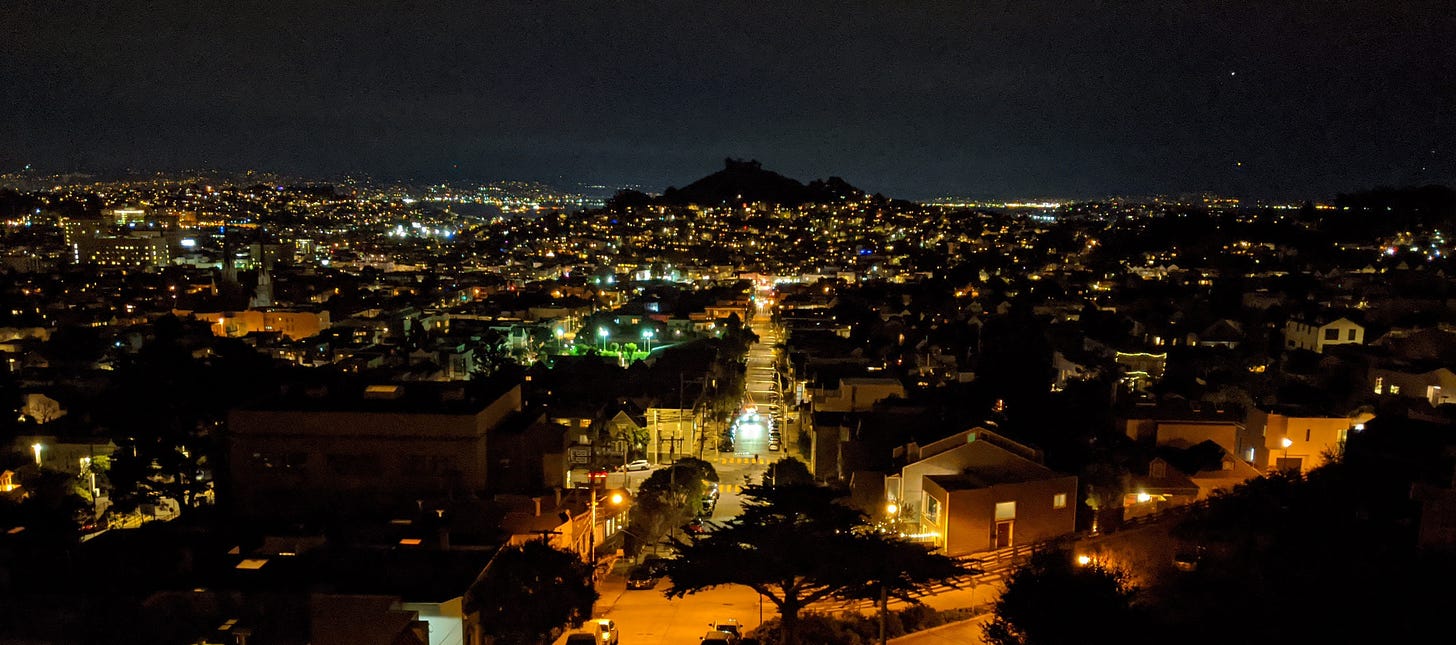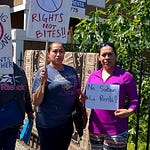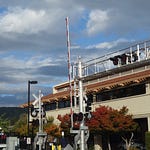About This Episode
Welcome to a special birthday edition (my birthday specifically) of Housing After Dark. We’re honored to have inaugural Bay Area Housing Finance Authority Director, Kate Hartley in our virtual studio. I’m a houser through and through, but I’ve spent the past 15 years studying regional government in the Bay Area. It’s very exciting to see housing getting more and more attention at the regional level and more support from local governments who realize that we can only do certain housing things (like housing finance) effectively when we do them together and at scale.
I think you will all enjoy this conversation, which includes everything from how Kate got to this point in her career, to where we are all hopefully going with this new agency, which we can all call by its initials, BAHFA.
This Episode’s Guest
Interview Transcript
Alex Schafran: Kate Hartley, welcome to Housing After Dark. It's fantastic to finally have you here.
Kate Hartley: Thank you, Alex. It's great to be here.
Alex Schafran: I’m really excited to talk about the Bay Area Housing Finance Agency (BAHFA). Before we dive into this historic regional agency building project, I want to start with you. This is a housing podcast for housers by housers often about housers. You've had an interesting journey to get to this point. I remember when I saw the news that you had been appointed [as Director of BAHFA], I was very excited and not surprised because the one thing I did know about you was your work with the Housing Accelerator Fund, which seemed to be the perfect training ground. How did you become a houser and how did you get to this point?
Kate Hartley: Thank you. I got to be a houser first through my love of cities. I'm very happily living in the Bay Area. I was a graduate student in the Jurisprudence and Social Policy Program at Berkeley Law studying legal history. One of the really amazing things about that program was that you could take classes anywhere in the university. I kept finding myself in Wurster Hall, that big concrete hulk of a building, taking theories of urban planning classes, which had nothing to do with my legal history program. I just loved the classes so much.
It finally dawned on me that I was doing the wrong thing studying legal history. I quit my program and while I was waitressing, got a job as a file clerk for Rick and Nancy Holliday at Holliday Development. Nancy and I were both swimmers on the masters team at Cal and I happened to mention my identity crisis. She’s like, “Well, I have an admin job if you want to come and check it out.” And that was it.
It was an amazing job working for Rick and Nancy, we did the adaptive reuse work South of Market that he really pioneered here, and I loved it. He was a very generous boss and allowed me to moonlight one year, during which I worked with the Asian Women's Shelter. Sadly, they needed a larger shelter in San Francisco, and I helped them find a new one as a side job. We had to do all of that work confidentially (the sales transactions). We did it, and that was it. I was hooked.
I went off to do affordable housing development at the San Francisco Housing Development Corporation. Michael Simmons was my first boss, an amazing person and developer and friend to this day. One thing led to another. I worked in the public sector at the California Housing Partnership Corporation with Matt Schwartz and Richard Mandel, also amazing bosses, to learn about money because it's really about the money.
Fast forward, I went to the San Francisco Mayor's Office of Housing as a Deputy Director, then became the Director between 2017 to 2019. That was a really amazing job - I was appointed by Ed Lee and it was really very hard to lose him. In 2019, I went to the Housing Accelerator Fund because Rebecca Foster, another great boss, was doing this amazing work, and I really wanted to be part of that. It was fantastic and we succeeded in our mission to do something different for homeless housing development. When this job opened up [Director of BAHFA], I thought: public sector, nonprofit, for profit, the money – someone's gotta do it, so it might as well be me.
Alex Schafran: That's an amazing story. It's fascinating. I hear Rick Holliday’s name so many times. If anybody's ever read my interview with Charmaine Curtis, another legend in the business and her origin story, I think she will have similar things to say about a particular type of innovation that Rick was doing.
I want to start with helping people understand what BAHFA is, and in particular, how it fits in with the rest of the regional government work. For those who have the Wurster and Berkeley connections, and you like reading older books about the Bay Area, there's a very well known book by a planner named Mel Scott. He has this statement that's always stuck with me where he talks about how the Bay Area has always struggled to build regionalism because it struggled to build regional citizens. People really identify with the Bay Area, but when it comes to this level of supporting regional agencies, we've always really struggled. Some of it is that we struggle to even understand it. Can you give us an understanding about what the regional agencies are and how BAHFA fits into that?
Kate Hartley: BAHFA is embedded in the Metropolitan Transportation Commission (MTC) and Association of Bay Area Governments (ABAG). So I'll start at the end of the story. We have many regional agencies, we actually have regional governance, but its authority and impact has been spotty and there are continued challenges. The first big regional agency was the Bay Area Council: business sponsored, public advocacy. The Bay Area Air Quality Management District followed when people were concerned about air pollution after the Bay Bridge and Golden Gate Bridge opened and we were shifting into a peacetime economy. The Association of Bay Area Governments (ABAG) started in 1961, a joint powers authority, and it was a land use planning entity. It had so much promise, and it’s still doing amazing things. There's so much that is regional and so much that we share: everything from open space design and use, to transportation, to the airports (an airport plan was part of the original ABAG portfolio), to earthquake mitigation, and we saw that really play out when the Bay Bridge went down in 1989.
The Metropolitan Transportation Commission (MTC) started in the early 1970s and there was a coalescence of activity. When Prop 13 passed in ‘78 and Reagan came into office in the 80s, there was a sharp drop in funding available to cities, and you need that city critical mass to make regionalism work. You need a sense of common goal and common interest and if the money's not there it's hard to be visionary, optimistic and generous with your views on how we as a region should move forward. That pretty dramatically cut the scope of ABAG’s work.
In the meantime, MTC was moving forward, because as a federally designated transportation agency, it had access to federal funds for transportation projects. But ABAG was very creative in those days too. It started different types of service work like ABAG POWER - pooled, green energy purchasing for cities. That's the kind of work that we should be doing: pooled insurance is another example. We get better rates if we all come together and pool our resources. So ABAG was doing that kind of work as well as the regional housing needs assessment work.
Other regional agencies have arisen over time, more single purpose, like the Bay Conservation and Development Commission, the San Francisco Bay Trail, the San Francisco Estuary Project, which is part of ABAG, and BayREN, which does really great energy efficiency work.
In 2017, ABAG and MTC merged because of all these overlapping goals, mission, studies, research and product they're putting out. And then here comes BAHFA in 2019. ABAG, MTC and BAHFA together now are really the trifecta of a healthy, vibrant Bay Area, because it's mobility, housing and the environment. That is super exciting for me and my colleagues. You can't leave one of those things out if your goal is a healthy Bay Area. You have to have the trifecta in place. And that's what we're trying to do now with BAHFA, MTC and ABAG.
Alex Schafran: It's really great to be able to put the contemporary moment and BAHFA in that context. There has been a tendency for some regionalism advocates to imagine it as the magical level of governance and think, “If we just had a regional government everything would be okay” because transportation and air pollution are regional and that's why we have these agencies.
What I like about the current moment is I feel like we're doing a better job of helping people understand the role that regional governments can play alongside the role of the state and national government. Regional government can't be a substitute for those folks not doing their job and it's not a substitute for local government. It's also not an authority. You have BART, East Bay Regional Parks District and all these subregional organizations that are regional in nature but in some ways they’re more mutualism.
They are membership organizations of all these local governments supported by the state and federal government to do things together that are more efficient and better done together. If you’re a planner, houser, or candidate for office at the local level, I think one of the most profound things you can do right now is help your constituents, colleagues and fellow members understand what regional agencies are, what they can be, what they can do, and how you can be a participant and get membership benefits out of that. It's been frustrating to watch some cities treat regional governments as if it's the state coming in and mandating things, and that's just not how it works. There's just so much that we can get from this if we shift our attitude.
Kate Hartley: I agree with that. One thing that's been amazing for me personally in this new job, is having the opportunity to get out to all nine counties and talk to elected officials, housing staff, civic organizations, and residents who want more affordable housing to understand in a much deeper way the diversity of the Bay Area. It's amazing to me that the people who crafted the enabling legislation at the state for BAHFA and of course, David Chiu, baked an acknowledgement of that diversity into our enabling legislation.
We have the power to raise funds regionally, which is so much more effective than each city and each county trying to pursue very resource-intensive housing development on their own. But within that framework, the different counties can craft expenditure plans for their money in ways that fit them. It's not a top-down direction of: “You must build this.” It's: “Let's come together and raise the resources we all need. Then you take the resources back to your county and figure out what makes sense for you and your residents.” It’s a great example of regionalism done well, because you have a mutuality of goal while preserving the diversity of implementation.
Alex Schafran: I want to get deeper into the weeds about what BAHFA hopes to do in the future. But let's take a little step back and help people understand how BAHFA came to be, and what BAHFA actually is right now. I really want to get people to understand BAHFA as a currently existing thing. Doorway exists, which we'll talk about. There's work being done on housing preservation already that's really important. You're already starting to do work around tenant protections. Even if they are shoestring budgets, BAHFA is real.
But let's take a step back. Since we're shouting out David Chiu, the origins of BAHFA are even earlier, right? We're gonna give Geeta Rao a little bit of a shout out and love from the Enterprise Community Partners. I know there's a piece of the story that involves the Committee to House the Bay Area (CASA) process, and BAHFA coming out as an idea that eventually becomes enabling legislation authored by David Chiu where the state gave permission to the nine counties to create the agency and to put it into MTC. From there, we’ve started to build an agency with various types of public, private and not for profit support. What are some of the key moments to getting here, and can you give us a sense about what BAHFA is doing now?
Kate Hartley: I'm glad you mentioned Geeta Rao and her colleague Heather Hood. I really attribute so much of BAHFA’s existence to Geeta sitting around thinking, “ You know, this housing thing in the Bay Area, we're not doing a good job.” Sometimes you have these moments of clarity and you say to yourself, “I'm energetic. I have a little time. I want to start something different.” That’s pretty much what Geeta, Heather and Enterprise did. They wrote a paper called the “Elephant in the Region: Charting a Path for Bay Area Metro to Lead a Bold Regional Housing Agenda” which discussed the idea that we're working so hard to provide affordable housing in a better way and we're not achieving it. Why aren't we talking about what we could do differently?
They convened a group of people to come together and brainstorm and put together a trip to New York City, because New York City has the Housing Development Corporation, which started in the 70s and is a really strong, important source of affordable housing finance for New York City. Their first early 1970s bond issuance was about $130 million. Between 2017 and 2022, the Housing Development Corporation financed somewhere between $1.5 billion and $2.7 billion for projects in the city each year. That's not in the aggregate, that's each year, that's how much money they're putting out the door. Over time, because they are so strong, they have taken interest on their loans, and they put it back into the projects that they financed. Between 2017 and 2022, they put between $100 and $325 million in subsidies into their projects annually.
Heather and Geeta looked at that and said, “Well, we could do something. If you look at the Bay Area as a whole, we have a similar population to New York City. Let's do it. It’s systems change and we need to do things differently.” This work and brainstorming and the writing of their paper coincided with MTC convening the Committee to House the Bay Area (CASA). In 2019, and notwithstanding what were sometimes difficult negotiations, they were able to produce a 10-point compact, the CASA Compact. It wasn't an easy process. It was diverse stakeholders from all across the Bay Area, and everybody was very interested in housing, but with different agendas.
One of the CASA Compact points is that we need to raise about $1.5 billion a year in housing finance for affordable housing, and another is we need a regional finance agency to do that. So David Chiu took the CASA Compact very seriously. With his leadership BAHFA passed through the state legislature and we are now a public entity that has the power to raise funds. We work in collaboration with all the nine counties to achieve these goals of delivering affordable housing throughout the Bay Area better.
BAHFA was all set to go out with a general obligation bond measure in 2020 but we were derailed by COVID and so we laid dormant. In 2021, BAHFA supporters and stakeholders and my colleagues at MTC and ABAG succeeded in getting a grant of $20 million from the state budget surplus to operationalize BAHFA. There are so many dedicated people working on this, and they kept that faith and vision alive. With that grant from the state, we operationalized last year. We now have myself, five other full time staff, and a great fellow through Partnership for the Bay Area’s Future Fund. It's our mighty team of seven working within MTC and ABAG.
We have this fantastic opportunity to leverage, for example, the great work that the housing and local planning group at MTC ABAG does throughout the region and technical assistance helping all the jurisdictions with their housing elements. We're working with the Regional Planning and Policy Department on helping to get pre-development money into new large priority sites projects for construction. That's something new that wasn't done before at MTC/ABAG.
Alex Schafran: To me (as somebody who's probably spent too much time at 50,000 feet watching the history of Bay Area regionalism playing out in real time), it's maybe a blessing that it didn't happen in 2020 and that it's being aimed at 2024. I think the team is much stronger, not just the fact that BAHFA is something real and there's more time for people to learn to understand it. Having folks like Heather Peters and Daniel Saver on the team, the talent is strong.
People have an opportunity to see the agency as a real thing that is already trying to do important things in the region. When we ask you to stand it up and fund it radically, we're asking you to stand up something that already exists, not just a dream or fantasy. You’re in a position that you wouldn't have been in had this run in 2020. I have a lot more confidence in our ability to build a successful campaign in 2024 and do all the other things that we need to do besides the big money. Before we get into this big money dream (which hopefully will become a reality), what are the things that BAHFA has been able to do with that state funding and other support and funding from other parts of the Bay Area to be able to stand up impacts in housing right now?
Kate Hartley: Shout out to Daniel Saver who really kept the BAHFA dream alive between 2020 and 2022. The fact that all this work in MTC ABAG on regional housing elements was going on when BAHFA opened its doors officially has been so beneficial because it brings together the resources, goals and vision of Plan Bay Area 2050. It really has been so gratifying to work with Daniel and Heather and their colleagues.
We hit the ground running. We feel urgency. With Daniel's help, the help of my other colleagues, and seed money, we have pilots that we launched when we started in 2022.
The first is the Doorway Housing Portal. It’s an online affordable housing application portal. So say you, Alex, are looking for affordable housing in the Bay Area. You live in Cloverdale and you just got a new job in Gilroy. That's a drive, and you need to find housing. The vision is that you can go online and look up affordable housing opportunities in Gilroy and every place else in the Bay Area and apply for those from your smartphone or computer. That is so different from how things work now.
San Francisco is the early model of this capacity. They started an online application portal (DAHLIA) in 2016 and it's working great. That's what we're basing our system on. But we're going nine-county wide. There are also early efforts in Alameda County, San Mateo, and San Jose. Otherwise, you have to go building by building and call people and apply. Sometimes it's paper applications. It's just so laborious. The people who get those opportunities and who succeed in getting housing are the people who have time and perseverance. And that’s inequitable.
Our long term goal for Doorway is to create an equitable system where everybody who's looking for housing goes online and applies. It’s easy. We had a soft launch of our portal on June 29. We got some amazing assistance from Google.org - we had a team of fellows that helped us with the design of the portal and they were just really tremendous. By this time next year, we'll have full application capacity. We're now at the point where we're doing outreach and working with jurisdictions all over the Bay Area to get their affordable housing opportunities into the program.
Preservation is another one of our pilots. Housing preservation is a couple of things. The goal of preservation is to try to prevent or stem the displacement of low income people from the apartment buildings where they live because the rent went up. We've seen this migration quite starkly, starting in 2013 or 2014. There has been lots of movement from San Francisco, Oakland and San Jose into outlying areas where the rent’s cheaper. It’s just a function of rents going up near job centers. It's really damaging to communities and families.
So with preservation, community-based organizations with funding from the public sector can buy buildings and convert them into permanently affordable housing to stabilize residents and prevent displacement. There are also many affordable developments that were financed 30 years ago with old bonds and those bonds are expiring now. When they expire, overnight, a person's rent can double and usually that means displacement. With preservation funding, a developer can extend the affordability in that building, or a new developer can come in and buy the building and preserve it.
We have two programs going. One is that we're about to get a $15 million Regional Early Action Planning Grant from the state. We’ll disburse this preservation funding to community based organizations and a portion of that funds will be reserved for community land trusts. Those community land trust organizations are trying to create a whole different ownership structure, which is interesting and really cool to understand and watch.
We also started a new program called the Welfare Tax Exemption Preservation Program. There are some developments out there that can convert to permanent affordable housing with one form of governmental assistance alone, and that is to help them secure a break on the property taxes they pay in exchange for leasing the units to low-income people. The property tax exemption is authorized by the state, memorialized in its revenue and taxation code. We've worked so far on the conversion of five buildings to affordable housing through this tax exemption process, and we've assisted more than 350 units. We're working with a developer right now, which I hope we can bring into the program, on a 200 unit building. It can be a really powerful tool and BAHFA is able to participate in this process by virtue of putting a deed restriction on the housing and making sure that the units are rented to low income people.
The other pilots we have are aimed at homelessness prevention and other anti-displacement system changes. We’re doing two things. We're starting a rental assistance program for seniors. It’s very compelling because right now, the fastest growing cohort of people who become homeless are people aged 70 and over. These are often people who've worked their whole lives, but they ran out of their savings, or their spouse or rent-paying roommate dies, or they have a major health issue and there's no safety net and they become homeless. It's kind of shocking. We’ll provide rental assistance, $500 to $800 per month, to extremely low income seniors who are housed now but are on the brink of becoming homeless. The rental assistance should help keep them in their homes.
We’re also going into courthouses across all nine counties to gather data on evictions because we don't have a comprehensive database about exactly who's getting evicted, why they're getting evicted, where, and when. If we have that data, we'll be able to create better eviction prevention programs. For example, if people can't pay the rent anymore, then a broader rental subsidy program may be indicated. If there are landlord disputes where legal representation would help, then that's a different need. But we need to know what is driving the bulk of evictions.
Our last pilot is our pipeline study with Enterprise Community Partners. It’s a full analysis of all the developments in progress in the Bay Area that are in what we call pre-development. They're in some stage of getting ready for construction, but they haven't received all the money that they need to actually break ground. We have that study for 2022 and are updating it for 2023. This is a good planning tool for us and all the jurisdictions, and let’s us know what's coming up, what's on deck, how much money do these projects need, and then it helps us decide how are we going to allocate our resources to get them into construction.
So that's what we're doing today.
Alex Schafran: Before anybody wants to critique the organization for trying to do too many things, it is so essential that we have this broad approach. I've written a lot about complete housing organizations, groups that are able to recognize that you got to work on the level of data infrastructure. If you don't believe me, there's a substack about housing data infrastructure. And if you really don't believe me, listen to Episode 2 of Housing After Dark with Councilmember Courtney Welch, where she talks about, as a young mother in a very housing insecure situation, going from waitlist to waitlist. That system is insane. It doesn't matter how much affordable housing we build if we don't have a system to help connect the people who need the housing to the housing itself. We have too many units that sit empty for too long because we don't have that system.
Thinking about some of my work with one of my clients Canal Alliance in San Rafael, there are lots of low income people living in very old buildings that need a ton of work, paying already too high rents and constantly at the threat of eviction and losing their house. There's no housing solution for Canal Alliance that does not involve somehow figuring out a way to preserve those buildings. No matter how much new housing or affordable housing you're able to build, there's not a lot of space to build new things if you don't want to displace people from their actual community. Preservation is so hard to do and so hard to do well.
And sadly, partly because of the way we've set up affordable housing programs in the past, we have this expiring reuse problem where we're constantly having to reinvent the wheel on the same buildings. Hopefully, we're going to learn about how to do that so we don't have to constantly face this crisis. I just love the breath that BAHFA has been able to achieve with a relatively limited budget, in a situation where seemingly everybody who has an idea about the housing crisis has one idea that they want to bang on endlessly, and they want you to do their one thing. The fact that you've been able to do all of these things, I will defend its coherence until the end of time.
Shout out to the folks who are doing it and shout out to folks like Mayor Jesse Arreguín in Berkeley, who has been such an important ally to BAHFA. There's a Chronicle article that a lot of people are sharing about the transformation in Berkeley that Mayor Arreguín has been central to. It's great that he's really recognized how important this is. I'm hoping that the example he's showing to all the other 100 jurisdictions in the Bay Area is like, “Hey, listen, I'm the mayor of a city. Local control is important in some ways, but this agency is important and this can help us build a pathway towards more housing.”
So there's a proposal, an idea to fund BAHFA properly, with a historic and nine county bond between $10 and $20 billion dollars, that would be on the 2024 ballot. Give us a little sense of where the bond process is at and what the rules will be in terms of how people get the money and what it can go for?
Kate Hartley: We've been working really hard on providing information and developing the programs and the understanding throughout the Bay Area about what this bond is and how we will be implementing it together. We got approval to begin the planning bond process from BAHFA’s governing boards, which includes a broad representation of governance throughout the Bay Area. Jesse Arreguin is a fantastic supporter. The money raised is an ad valorem property tax, so property owners around the Bay will pay to raise these funds. It's a shared responsibility to create more housing.
80% of the funds that we raise go back to the county of origin based on assessed value. The counties, working with their cities, will decide how to spend the money. There are some basic rules in our enabling legislation about how that money should be spent. They're pretty minimalist, but at least 52% of the money has to be spent on new construction, and this is because we have a housing shortage. 15% of the money has to be spent on those preservation projects like the Canal Alliance projects that you were talking about. 28% of the funds for cities and counties is flexible. It can be used on housing-related uses, more housing, homeownership, down payment assistance for low and moderate income households – there's a lot of flexibility there. And then 5% of the money is for tenant protections.
There's a parallel effort underway both at the state legislature and by housing stakeholders across the state to amend the Constitution to lower the voter threshold for general obligation housing bonds from two-thirds, which is a very difficult standard to reach, to 55% or simple majority. In fact, Berkeley's housing measure failed last year because it got over 60% of the vote, but not 66.6%. Also, this amendment seeks to allow a slight expansion of how we can use our funds so that we can actually address homelessness.
Right now, per the California Constitution, you can't use general obligation bond funds to provide things like rental assistance, to provide support for those seniors age 70 and over who are on the brink of homelessness. We would like to change that. If we can change that, then 5% of BAHFA’s money would go to tenant protections. BAHFA retains 20% of the funds, which will allow us to invest throughout the Bay Area to advance innovative projects and to try to lower construction costs. It's really important. We know we can create a regional finance agency that can start reinvesting proceeds from our loans into the community.
Alex Schafran: Thanks so much for that update. There will be lots of information on this podcast website about the campaign, Bay Area Housing For All. You're seeing organizations and groups from around all nine counties starting to rally the troops for this historic coming together. I'm excited for the campaign as much as I am excited for the outcome. It's one of those things where we can really bring people together across a lot of different areas.
We’re just using bond money, which is money that we borrow, collectively paid for both by property owners and property renters because property owners pass on the cost of property taxes to the property renter. We're saying, “Hey, we're gonna borrow from the future to be able to pay for things that we need to do right now. And we're confident that this is going to help us in all kinds of ways.”
One of the things that I'm hoping that we can do as we move forward in this campaign is do some studies that show how the money can be leveraged. The 80% is just the local direct return. It means you have direct local control over that 80%. it doesn't mean you're not getting potential access to the 100% and it doesn't mean that that money can't be leveraged with other sorts of money, especially in smaller jurisdictions.
I’m doing a lot of work in Marin County. There isn't a single jurisdiction in Marin County that is large enough to be able to do the kinds of things that BAHFA can do. I am convinced that the return on investment to Marin County of that dollar that they would put in to support the bond is going to be $1.50, $2, $3. It's going to be profound in terms of how things can change.
BAHFA can also be at the center of innovation to help create these blended capital pools that enable us in different ways, whether it's buyouts and preservations, or investments in new financing so that the actual number of dollars that come out of this is much greater than whatever we're borrowing officially from the future.
This gets us to the final question. Beyond the bond, when you have time and headspace to think about the future, this future where BAHFA is fully stood up, fully funded and operational, what are the types of innovation, or types of programs that you really hope it will ultimately be able to do? Are there specific innovations and challenges that you hope to be able to address in the future?
Kate Hartley: Yes, we need to lower construction costs. We know we can do it and we can do it through streamlining. We also have this very young, factory built housing industry that can grow and evolve and improve. If we can bring together efficient financing through BAHFA, evolve into a strong financial entity that can reinvest and lend at the same time, pursue simplified entitlement processes and building processes, and then bring in new technologies with good, high living wages for workers, we can bring it all together. Instead of paying million dollars a unit (which we are paying in some cases now, including for affordable studios), we bring that down to more like $500,000, then we double our output and create safe, decent housing at a high quality level. That is the dream come true.
Alex Schafran: I love it. Rick Holliday, maybe this mention of modular will be another reason why you get you to come on the podcast, we will definitely be doing a Housing After Dark episode on modular.
The other thing that was important for me that I hope listeners take away, is that we have a very long tendency in the Bay Area (and I think this is something that happens around the country) when we build a piece of infrastructure, the minute that it comes out, we hop off the bandwagon and start critiquing it. It happened with BART, famously. BART launches in 1977, and in 1980, there were two fires, ridership was down, and everybody's like “BART is a failure”.
It set us back so far on BART expansion (on the full dream), it took decades to recover from everybody hopping off the bandwagon. I see that tendency already. People will go on to Doorway today and be like, “It's not exactly what I want. And it's not perfect, and it doesn't do the thing that I need.” Please, lean in and offer that feedback, stay patient, tell your organization or your group to help BAHFA build Doorway right.
Doorway ultimately is a partnership. If housing providers aren't leaning in fully, and coming up with innovative ways to use it and build it, if the social workers and housing counselors are not finding out new ways of using it and owning it, it's not going to work. Same with BAHFA.
So if you’re concerned, or if you’re a skeptic, if you want BAHFA to do something that is not currently doing, then lean in, become an ally, help us build this thing. That doesn’t mean you can't make constructive criticisms along the way. But it's an attitude that’s really important. We don't ask enough about what something could become. We always look at what it is, and then we make critiques about what it is. That's one of the things that's been holding us back in the Bay Area for a really long time.
That’s why I had to write a book about the fact that we've had really amazing ideas forever, including modular and everything. Almost every good idea has, except for maybe BAHFA and Geeta’s idea, existed since before most of us were born, but we struggled to implement things because I think of this tendency to not support.
For instance, I want BAHFA to be a real centerpiece of the multifamily home ownership revolution and community land trusts. That's actually got to be central to BAHFA. I think you mentioned the modular dream. There are so many other aspects of what it can become and I'm just excited you're doing it. I appreciate the time and the energy and the fact that you're doing this.
If you are not in the Bay Area, the most exciting thing I think both about BAHFA and for BAHFA, is that BAHFA is no longer alone. Los Angeles now has an Affordable Housing Finance Agency, LA County. And if you're like, “They only did the county!” Well, LA County is the size of the Bay Area. And Nancy Skinner, in one of her final acts, is attempting to create some enabling legislation that will make it easier for other regions in the state of California to do this. So hopefully five years down the line BAHFA has a lot of fellow cohorts.
It helps the state come up with some structures to channel some of its funding through regional agencies. The challenge there becomes how do we do regional housing finance in the north state? How do we do regional housing finance in areas that do not have an MTC or ABAG or a SCAG or a SANDAG. So if you're a regional nerd, and you turned in this is one of the great challenges of regionalism is making sure that the benefits of regionalism can extend to all Californians in all 58 counties even if they don't live in a place that has that sort of technical capacity.
We have a radical inequality between the capacity that MTC and ABAG has, and if you just go over the Altamont Pass, you'll see the local governments are struggling because they just don't have that. But there are ways that we can do it. And we can make a different type of regionalism for everybody. Our friends up in Siskiyou are not gonna have the same kind of regionalism, they don't want the same kind of regionalism, but there are forms of regionalism that can help up in the north state and there's some really good folks up there that I think see it that way and can make these things happen.
Kate Hartley, thank you for your work. Thank you for being on Housing After Dark.
Kate Hartley: Alex, I really appreciate it. This was a great opportunity. I really enjoyed the discussion.















Share this post